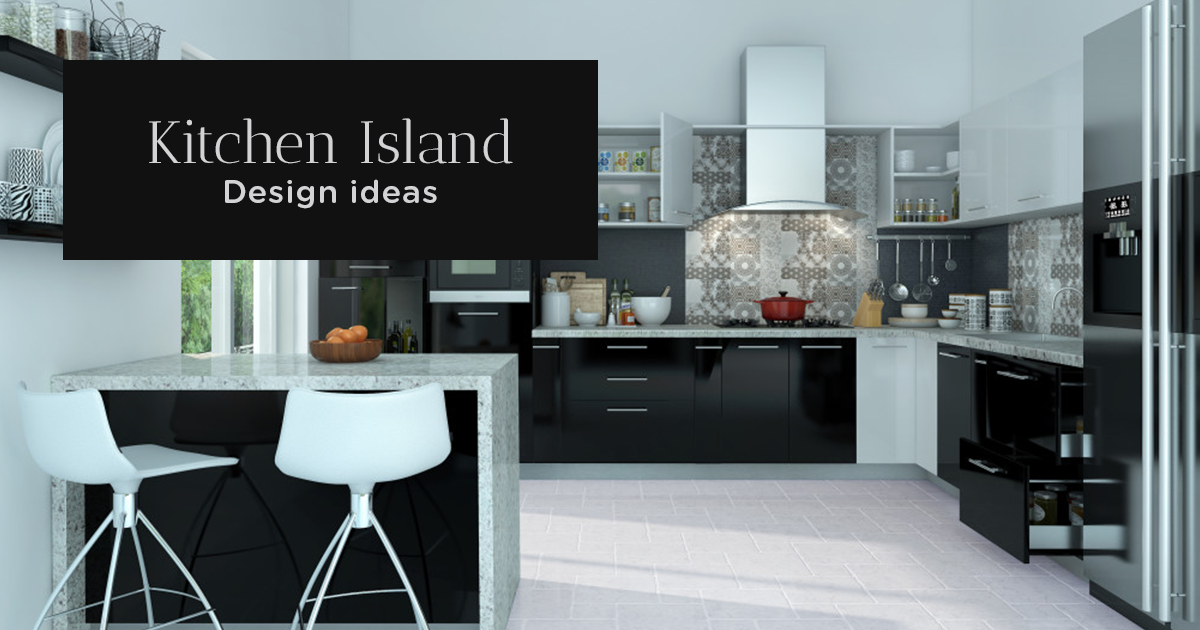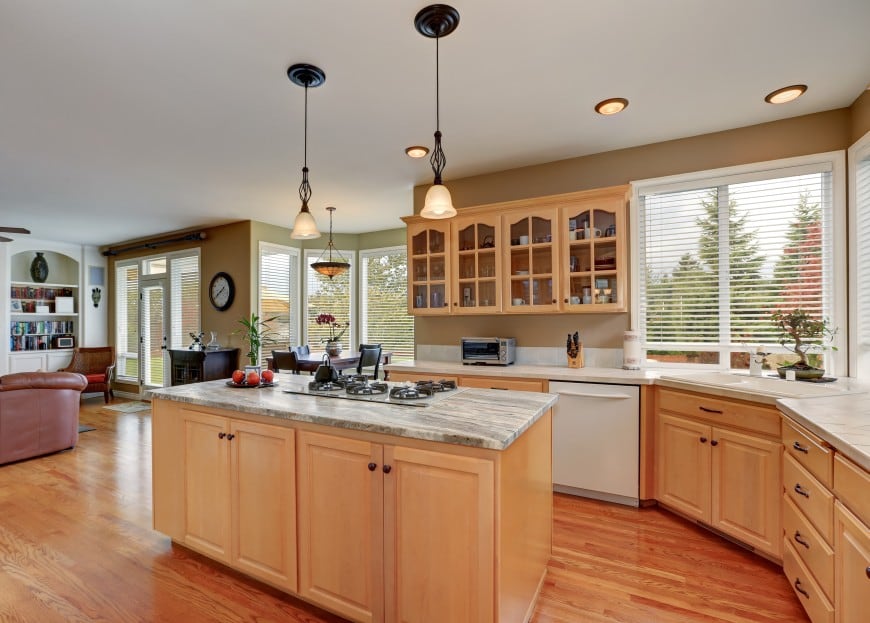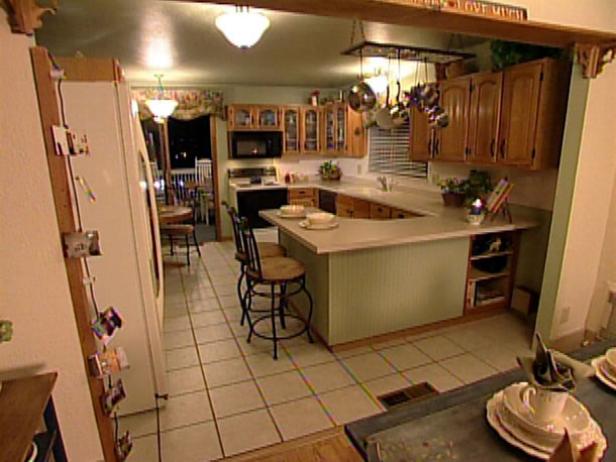A corner kitchen island is a clever and space-saving solution that can transform the layout and functionality of your kitchen. It allows you to utilize an often overlooked area in your kitchen, making the most of every square inch. These islands can be tailored to suit kitchens of all sizes, from small apartments to sprawling open-plan layouts. The corner placement provides additional counter space for cooking, prep work, or even socializing while freeing up the center of the kitchen for other uses. Whether you prefer a compact design or a more elaborate setup, the possibilities for a corner kitchen island are virtually endless, limited only by your creativity and needs.
One of the most practical uses for a corner kitchen island is additional storage. In smaller kitchens, where cabinetry and shelving may be limited, a corner island can house drawers, shelves, or even built-in appliances. This extra storage is invaluable for keeping countertops clutter-free and ensuring that everything from pots and pans to pantry items has a dedicated space. For those with larger kitchens, a corner island can serve as a secondary storage hub, perfect for less frequently used items or even wine racks and specialty storage solutions.

Another advantage of a corner kitchen island is its potential to act as a dining area or casual seating spot. In homes where a formal dining room might be lacking or where the kitchen serves as the primary gathering place, incorporating seating into the island design allows for a multifunctional space. With the right layout, a corner island can comfortably seat two or more people, providing an ideal spot for quick meals, coffee breaks, or socializing while preparing food. Stools or chairs tucked neatly under the overhang keep the area looking tidy when not in use.
Aesthetically, a corner kitchen island can anchor the design of your kitchen and become a central focal point. Since it occupies a unique position in the room, it can be designed to stand out with contrasting material or color from the rest of the cabinetry and countertops. For instance, if your kitchen features sleek white cabinets, a corner island with a wood finish can introduce warmth and texture to the space. Alternatively, a bold color like navy blue or emerald green can make the island a statement piece. You could also incorporate a marble or quartz countertop for a touch of elegance and luxury.

One of the key benefits of a corner kitchen island is how it can improve the workflow in your kitchen. By strategically placing the island in a corner, you create a more efficient “work triangle,” which refers to the ideal positioning of the sink, stove, and refrigerator. A well-placed corner island allows you to move seamlessly between these key areas while cooking, reducing the time and effort spent navigating around the kitchen. The extra counter space can also be used as a dedicated prep area, giving you room to spread out while keeping the rest of the kitchen functional for other tasks.
Corner kitchen islands can be highly customizable to fit the unique needs of your household. For example, if you frequently bake or entertain, you might opt for a larger countertop with a built-in sink or a specialized baking station. For smaller households, a more compact design with a single-tier surface might be all that’s needed. The ability to personalize the design means that a corner island can work for any kitchen size or layout, whether you’re maximizing a tight space or creating an expansive cooking area in a larger kitchen.

In terms of functionality, a corner kitchen island can be designed to include various built-in appliances. From dishwashers to wine coolers to microwave ovens, the options are vast. Installing a cooktop on the island can free up valuable counter space along the perimeter of the kitchen, while also allowing you to face outward and interact with family or guests while cooking. Some homeowners even incorporate warming drawers or small refrigerators into their corner island for added convenience, making the kitchen more efficient and enjoyable to use.
Lighting plays a significant role in making a corner kitchen island both functional and visually appealing. Pendant lights are a popular choice for illuminating islands, as they provide focused light for tasks like chopping or baking while also adding an element of design. For a more contemporary look, consider track lighting or recessed ceiling lights that create a sleek and unobtrusive appearance. Under-cabinet lighting can also be installed along the island’s underside for ambient light that enhances the overall mood of the space. Proper lighting ensures that your corner kitchen island is as practical as it is stylish.
In open-plan homes, a corner kitchen island can also act as a natural divider between the kitchen and adjacent living spaces. Its positioning in the corner allows it to subtly define the kitchen area without creating a barrier that cuts off the flow between rooms. This is especially useful in homes where the kitchen, dining room, and living room are part of one open space. The island serves as a visual boundary, helping to delineate the cooking area from the rest of the home while maintaining an open and inviting atmosphere.
One creative option for a corner kitchen island is to incorporate a combination of materials for added visual interest. For instance, a butcher block countertop on one section can be used for chopping and prep work, while a marble or granite surface on another section can serve as a baking station or display area. Mixing materials not only adds texture and depth to the kitchen but also provides practical benefits by designating different zones within the island for specific tasks.

Another innovative idea is to design a corner kitchen island with a tiered surface. A higher bar-level countertop on one side can provide seating for guests, while a lower countertop can serve as a workspace for food prep. This multi-level approach is particularly useful in homes where the kitchen serves multiple purposes, as it allows for a clear separation between cooking and dining or socializing areas without sacrificing space.
For those who want to maximize efficiency, a corner kitchen island can also feature pull-out or rotating shelves. These shelves make it easier to access items stored deep within the island, ensuring that no space goes to waste. Lazy Susans, pull-out spice racks, or even deep drawers with built-in organizers can be included to keep the island organized and fully functional. This kind of smart storage solution can dramatically improve the usability of the kitchen, especially in smaller spaces.
While corner kitchen islands are often seen as a solution for smaller kitchens, they can also be a stunning addition to larger spaces. In a larger kitchen, the corner island can serve as a secondary prep area, offering additional workspace away from the main countertops. This is particularly useful in homes where multiple people cook at the same time, as it creates distinct zones for different tasks. In this case, the island can be designed with ample countertop space, seating, and storage to serve as a true hub of the kitchen.

One of the unique aspects of a corner kitchen island is its ability to work in both traditional and modern kitchen designs. For a more rustic or farmhouse-style kitchen, a corner island with open shelving, wood finishes, and vintage-inspired fixtures can enhance the overall aesthetic. In contrast, for a more contemporary kitchen, sleek lines, minimalist hardware, and metallic accents can create a striking, modern look. The versatility of the corner island allows it to fit seamlessly into any design style.
Many homeowners are incorporating eco-friendly materials into their corner kitchen islands, such as sustainable wood, recycled countertops, or energy-efficient appliances. These green choices not only reduce the environmental impact of the renovation but also add unique character to the kitchen. Choosing sustainable materials can also enhance the longevity of your kitchen island, as many eco-friendly options are highly durable and resistant to wear and tear.
Last, the addition of a corner kitchen island can increase the value of your home. A well-designed and functional kitchen is one of the most important factors in determining a home’s resale value. By incorporating a thoughtfully planned island, particularly one that enhances storage, seating, and overall layout, you can make your kitchen more appealing to potential buyers. Even if you’re not planning to sell in the near future, the added functionality and aesthetic appeal will enhance your day-to-day experience in the kitchen.

Common Mistakes to Avoid
One of the most common mistakes when designing a corner kitchen island is failing to account for the kitchen’s overall traffic flow. If the island is too large or positioned awkwardly, it can obstruct movement between key areas of the kitchen. It’s essential to ensure that there is enough clearance around the island for easy movement, particularly between the sink, stove, and refrigerator.
Another mistake is underestimating the need for proper lighting. A poorly lit corner kitchen island can make meal prep difficult and diminish the island’s visual appeal. Investing in good overhead lighting, such as pendant lights or recessed lights, ensures that the island is well-illuminated for both functional and aesthetic purposes.
Choosing the wrong materials for your corner island can also lead to problems. For example, using a countertop material that isn’t heat-resistant or durable can result in damage from hot pots or scratches. It’s important to select materials that are both functional and easy to maintain, particularly for surfaces that will see a lot of use.

Not incorporating enough storage into the design is another common mistake. Many homeowners focus on the visual appeal of the island without considering how it can improve kitchen storage. Including drawers, shelves, and other storage solutions in the design maximizes the island’s utility and ensures that it serves a practical purpose.
Overlooking the kitchen’s existing style and design when selecting the island’s aesthetic can result in a mismatched look. It’s crucial to choose a design that complements the rest of the kitchen, including the cabinetry, countertops, and appliances. A cohesive design will ensure that the corner island looks intentional rather than out of place.
Finally, neglecting to plan for future needs can limit the island’s long-term functionality. For example, if you anticipate needing more storage or seating down the line, it’s worth considering these factors during the design process. Planning for future needs ensures that your corner kitchen island remains functional and useful for years to come.

What are the benefits of a corner kitchen island?
A corner kitchen island offers several benefits, including maximizing space, providing additional counter and storage areas, and creating a multifunctional zone for dining, cooking, and socializing. Its placement in the corner frees up the center of the kitchen, making it ideal for both small and large kitchens. It can also enhance the overall workflow by improving the efficiency of the kitchen layout.
How can I use a corner kitchen island for storage?
A corner kitchen island can be designed with a variety of storage options, such as drawers, shelves, or cabinets. These can be used to store anything from kitchen utensils to appliances. For maximum efficiency, consider incorporating pull-out shelves, spice racks, or lazy Susans to make better use of hard-to-reach corners within the island.
What materials work best for a corner kitchen island?
The best materials for a corner kitchen island depend on your specific needs and kitchen style. Durable and easy-to-clean surfaces like granite, quartz, or butcher block are popular choices for countertops. For the base, materials like wood or stainless steel are common. If you want to add a unique element, mixing materials such as a wooden base with a marble countertop can add visual interest.

Can I include appliances in a corner kitchen island?
Yes, many corner kitchen islands are designed to include built-in appliances such as cooktops, microwaves, dishwashers, or wine coolers. This can enhance the island’s functionality and help free up counter space elsewhere in the kitchen. Before incorporating appliances, ensure that your kitchen’s electrical and plumbing systems can accommodate them.
How do I determine the size of my corner kitchen island?
The size of your corner kitchen island should be proportional to the overall size of your kitchen. It’s important to leave enough clearance around the island for people to move freely. Ideally, you should have at least 36 inches of space between the island and other countertops or appliances to avoid obstructing traffic flow.
What are some design ideas for a corner kitchen island?
Design options for a corner kitchen island range from sleek, minimalist designs with clean lines to more rustic, farmhouse-inspired islands with open shelving and wood finishes. You can also customize the island with features like tiered countertops, built-in seating, or a combination of different countertop materials. Consider how the island will be used and choose a design that complements the rest of your kitchen.

Kitchen Corner sink, Farmhouse sink

Can You Paint Over Granite Countertops – Corner Kitchen Cupboard Ideas

Building a Kitchen Island With Cabinets

Related Posts:
- Tuscan Retreat Kitchen Island
- Island Kitchen Restaurant
- Betty Crocker Kitchen Island
- Kitchen Island Solutions
- Kitchen Island Table With 4 Chairs
- Kitchen Cabinets And Island Different Colors
- Functional Kitchen Island Designs
- Two Tier Kitchen Island Dimensions
- Calabar Kitchen Victoria Island
- Kitchen Blueprints With Island